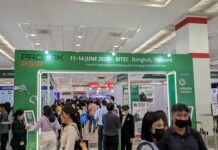After dominating the United States and Europe markets, where India holds a substantial market share, the Indian Flexible Intermediate Bulk Container (FIBC) industry is looking eastward. According to Shashank Agarwal, the president of the Indian Flexible Intermediate Bulk Container Association (IFIBCA), India has a 75% share in European FIBC imports and a 72% share in the US import market, and is now looking at the Japanese and South Korean markets to drive the next leg of growth.
“The Indian FIBC industry has come a long way since the formation of IFIBCA two decades ago. Twenty years ago, India was producing about 10,000 tons a year of FIBCs. Today, we produce 400,000 tons. India is the biggest player in the FIBC export market. We are the leading exporter to the US and Europe. IFIBCA has 35 members,” Agarwal said.
Agarwal attributes India’s dominance in the FIBC export market to multiple factors, including a focus on quality, excellent engineering capabilities, backward integration, and ethical business practices. These factors have contributed to the industry’s growth and reputation.
FIBCs or jumbo bags are used for bulk transportation and the storage of items such as food, milk powder, chocolate power, agro products, chemicals, PVC, polymers, and building materials, among others.
While India already has a significant market share in the US and Europe, Agarwal believes that further expansion in these markets may be challenging due to the high share already attained. Therefore, Indian FIBC players are now targeting markets such as South Korea and Japan for future growth.
“India already has a massive share in the US and European markets and it will be very tough to expand further in these markets. Japan and South Korea are the two markets unexplored by the Indian FIBC manufacturers. So, expanding in these markets is the next step for us. We are working hard to expand our footprint there. Indian FIBCs are expected to replace the Chinese and Vietnamese in Japan and South Korea,” he said.
At Interpack 2023, approximately 20 Indian FIBC manufacturers participated as exhibitors and visitors, according to Agarwal who is also the deputy managing director of Kanpur Plastipack.
Fifty-two years of Kanpur Plastipack
Kanpur Plastipack is one of India’s leading FIBC manufacturers established by Agarwal’s grandfather 52 years ago. Kanpur Plastipack extrudes around 35,000 tons annually and has all the relevant certifications. “About 80% of the FIBCs manufactured by Kanpur Plastipack are exported,” Agarwal said.











